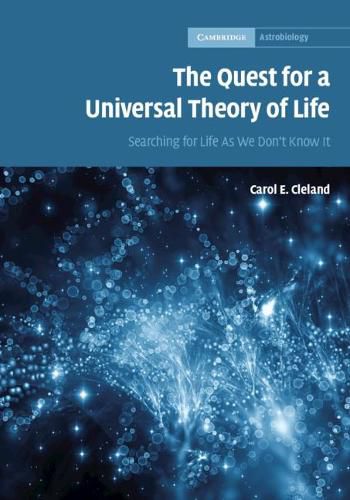Readings Newsletter
Become a Readings Member to make your shopping experience even easier.
Sign in or sign up for free!
You’re not far away from qualifying for FREE standard shipping within Australia
You’ve qualified for FREE standard shipping within Australia
The cart is loading…






Integrating both scientific and philosophical perspectives, this book provides an informed analysis of the challenges of formulating a universal theory of life. Among the issues discussed are crucial differences between definitions and scientific theories and, in the context of examples from the history of science, how successful general theories develop. The central problem discussed is two-fold: first, our understanding of life is still tacitly wedded to an antiquated Aristotelian framework for biology; and second, there are compelling reasons for considering that familiar Earth life, which descends from a last universal common ancestor, is unrepresentative. What is needed are examples of life as we don’t know it. Potential sources are evaluated, including artificial life, extraterrestrial life, and a shadow biosphere right here on Earth, and a novel strategy for searching for unfamiliar life in the absence of a definition or general theory is developed. The book is a valuable resource for graduate students and researchers studying the nature, origins, and extent of life in the universe.
$9.00 standard shipping within Australia
FREE standard shipping within Australia for orders over $100.00
Express & International shipping calculated at checkout
Integrating both scientific and philosophical perspectives, this book provides an informed analysis of the challenges of formulating a universal theory of life. Among the issues discussed are crucial differences between definitions and scientific theories and, in the context of examples from the history of science, how successful general theories develop. The central problem discussed is two-fold: first, our understanding of life is still tacitly wedded to an antiquated Aristotelian framework for biology; and second, there are compelling reasons for considering that familiar Earth life, which descends from a last universal common ancestor, is unrepresentative. What is needed are examples of life as we don’t know it. Potential sources are evaluated, including artificial life, extraterrestrial life, and a shadow biosphere right here on Earth, and a novel strategy for searching for unfamiliar life in the absence of a definition or general theory is developed. The book is a valuable resource for graduate students and researchers studying the nature, origins, and extent of life in the universe.